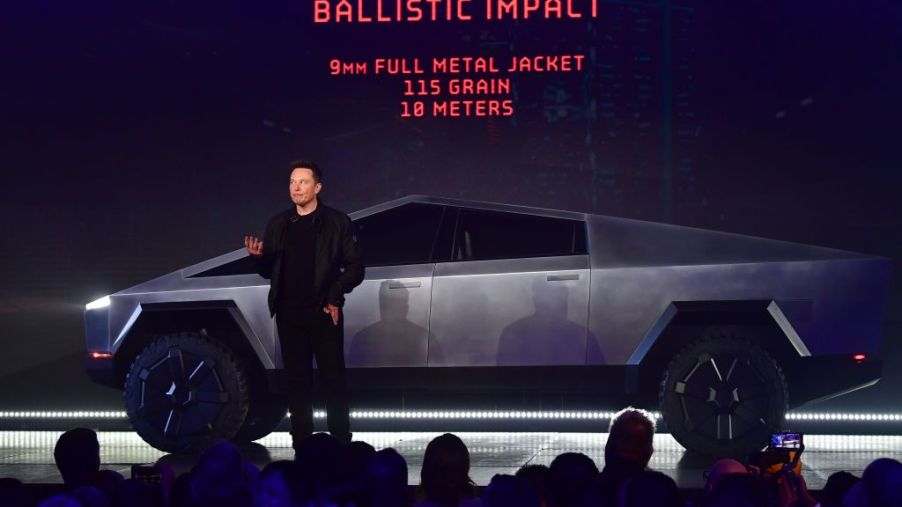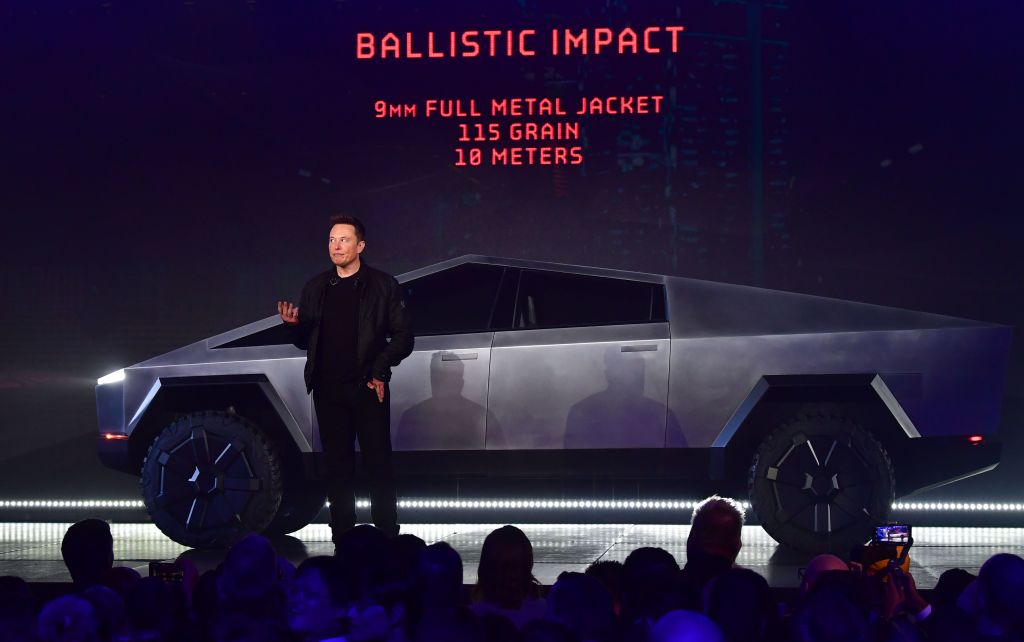
1 Simple Change Could Make Tesla’s Cybertruck More Appealing to the Masses
When Tesla’s Cybertruck was unveiled, its iconoclastic looks had more than a few people believing it would revolutionize the pickup truck world. Others speculated that it was a futuristic drawing rendered in MS Paint made real and other even less flattering things.
Either way, the stainless steel pickup has the kind of extreme styling never seen on a pickup before. But we found one blogger who suggests a basic Tesla truck change that would improve its appearance and attract more fans.
A single design change that could make a huge difference

Joel Stockdale of Autoblog.com feels that the Cybertruck‘s design is too austere and primitive despite its potential to change the way we look at trucks. On the plus side, its wedge shape is reminiscent of ’70s supercars. But its lines are more severe and angular than they need to be, and its continuous planes could be broken up somewhat. Adding a slight curve to the Cybertruck’s lines would give it a more refined appearance.
To illustrate what he means by this suggestion, Stockdale refers to one of Ken Okuyama’s automotive designs, the Kode 0. Okuyama worked at Pininfarina and supervised the design of the Enzo Ferrari, the Ferrari P4/5, and the fourth-generation Chevrolet Camaro, among others.
With years of supercar design experience, Okuyama seems to have a special insight into that iconic wedge. The striking Kode 0 follows through on that shape, tapering at the front and becoming thick at the rear with a short overhang. But Okuyama made the wedge’s styling slightly more fluid and curving, informed by Marcello Gandini’s designs for Lamborghini. Nearly every plane on the Kode 0 is arched ever so slightly, instead of being flat.
Alternative Cybertruck design ideas
Tesla designers, Stockdale suggests, could take a page from Okuyama’s playbook. From a visual design standpoint, arches, rounded corners, and curves are pleasing to the eye. The Cybertruck’s designers could subtly reduce the flat planes by incorporating arching into its design while retaining its futuristic character.
One specific area of the Cybertruck that could benefit from Okuyama’s design sensibility is the tailgate, according to Stockdale. If a crease were added or areas of different materials or textures were inserted, it would look more finished and eye-catching. Applying the Tesla logo font to the tailgate would also add polish.
Another problem is that any details that aren’t integrated into the truck’s oversimplified design tend to stick out. For example, the area where the front bumper, the front flares, and the side of the truck’s front end meet appear as if they’ve been cobbled together. Curving or arching lines also tend to unify disparate features in a case like this.
If Tesla designers introduced a few slightly rounded lines into areas like this, it would be an improvement. Similarly, small adjustments to soften the angle of the Cybertruck’s side windows would give the greenhouse a more unified look.
Enough time to make enhancements
Not everyone agrees with Stockdale’s critique of the Cybertruck’s design; there seem to be many people who like it just the way it is. In the first few weeks after its big reveal, a reported 250,000 or more buyers have pre-ordered the pickup. Both Tesla enthusiasts and EV fans have taken a shine to the truck. And so far, a few influencers such as Joe Rogan have admitted that they’ve signed up for one.
Stockdale hasn’t completely written off the design, either. He believes that its designers still can craft refinements that could make it an excellent example of automotive design. Important production components, such as windshield wipers and side mirrors were not included at its unveiling. This could be taken as a clue that the version at the unveiling was closer to a concept vehicle than a finished product. It might mean that a finalized version of the Cybertruck’s design may still be some months out in the future.
With production scheduled to start in late-2021 or possibly 2022 for the single-motor version, Tesla designers still have time to finesse the truck’s design. It’s hard to say if Elon Musk would agree to make the kind of changes that Stockdale recommends. But if it meant winning over more buyers (and investors), maybe Tesla could implement a few subtle modifications using Okuyama’s Kode 0 as inspiration.


